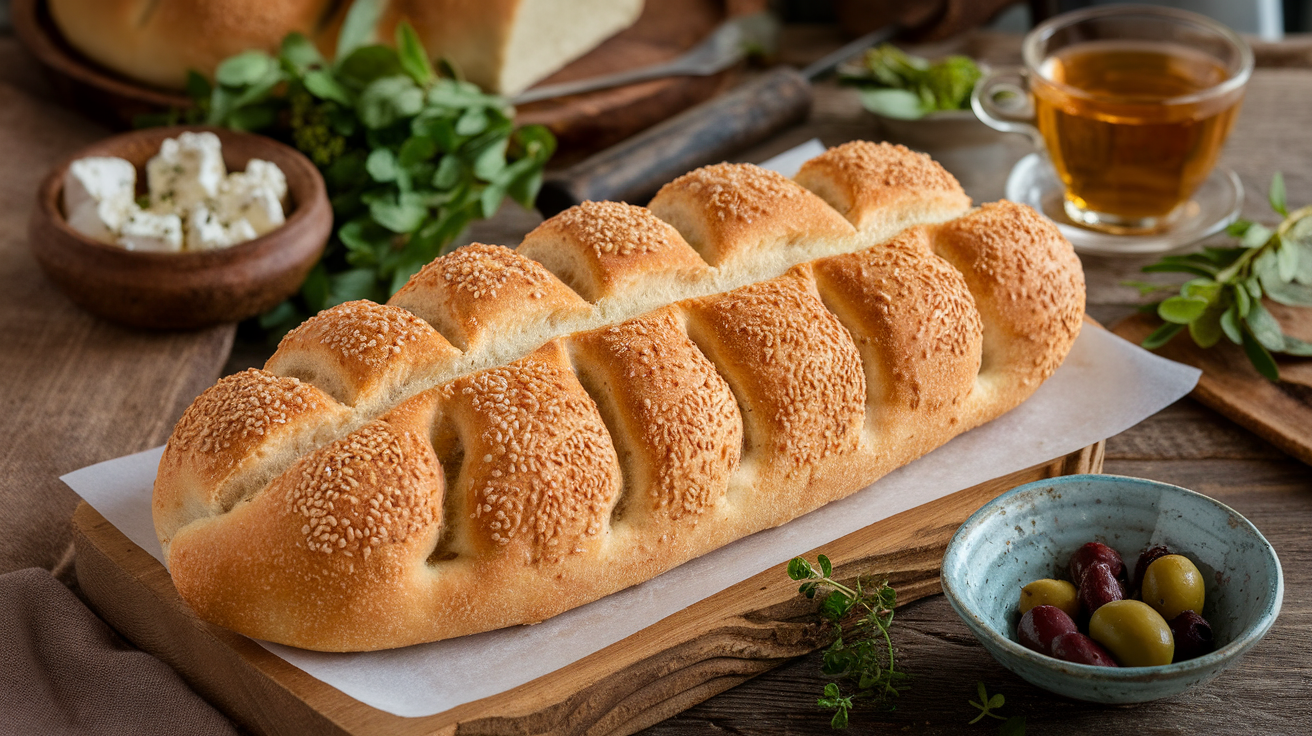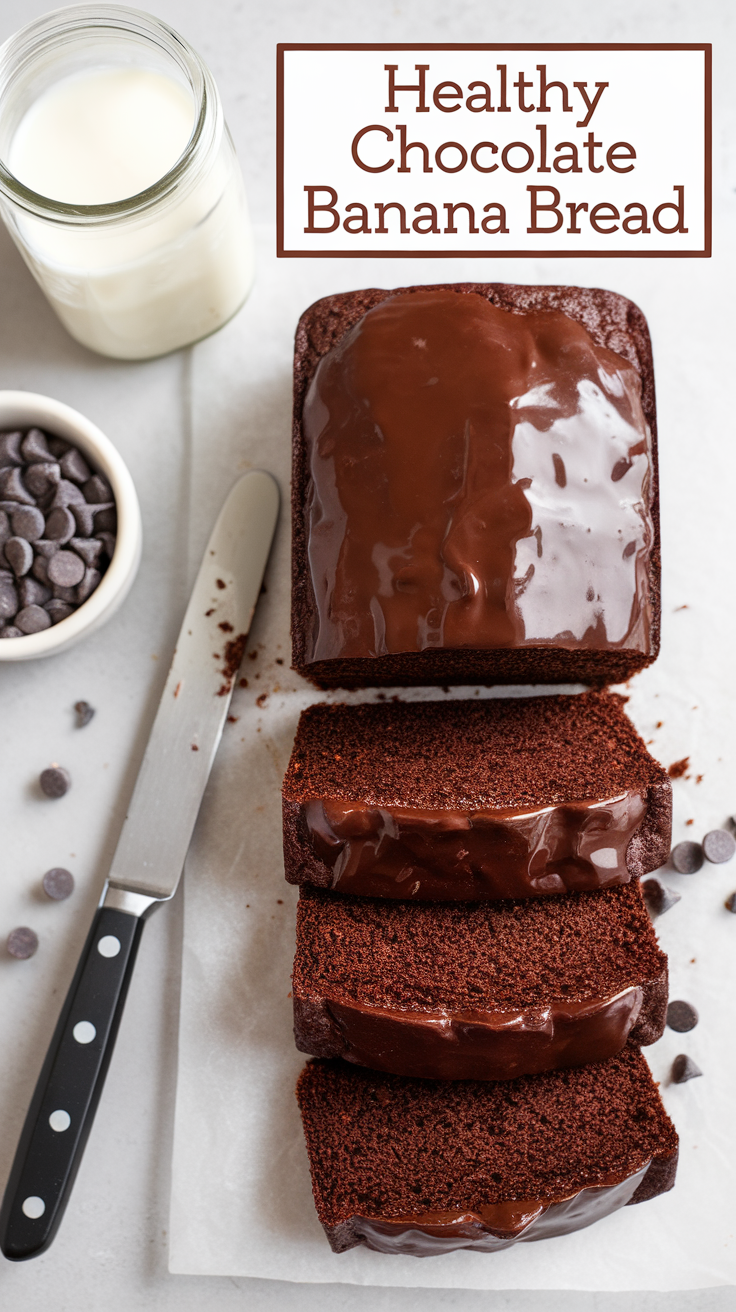Barbari bread, also called Persian Barbari bread, is one of the most iconic and beloved types of bread in Iranian cuisine. This flatbread is treasured for its unique texture — boasting a thick, soft crumb wrapped in a perfectly golden, crispy crust. Known for its artisanal craftsmanship, Barbari bread has been baked for centuries in Iran and has found admirers worldwide among fans of artisan bread recipes and traditional Middle Eastern baking.
In this comprehensive guide, we will dive deep into everything you need to know about Barbari bread — its history, cultural significance, ingredients, step-by-step baking instructions, and tips to make this crunchy bread recipe at home. We’ll also highlight how it compares to other popular breads like Arabic bread and share ideas to enjoy your freshly baked Persian bread. Whether you’re a bread enthusiast or a home baker wanting to explore Iranian flavors, this Barbari bread recipe will become a treasured staple.
What is Barbari Bread? Understanding the Iranian Classic
At its core, Barbari bread is a type of Iranian flatbread characterized by its long, oval or rectangular shape and signature thick ridges running lengthwise across the top. The crust is crisp and slightly chewy thanks to a special glaze called “roomal,” a mix of baking soda, flour, and water, brushed onto the dough before baking. This glaze caramelizes during baking, giving Barbari bread its distinctive shine and crunch.
Unlike many thin, soft flatbreads common across the Middle East, Persian Barbari bread stands apart with its thickness — usually around one inch — which provides a soft and airy crumb inside that contrasts beautifully with the crispy outer layer. It’s traditionally baked in large, elongated loaves and often sprinkled with sesame or nigella seeds.
Barbari bread has deep cultural roots, believed to be named after the Barbari people of northeastern Iran. Today, it is enjoyed throughout Iran and neighboring countries, often served for breakfast with cream cheese and fresh herbs, or alongside stews, kebabs, and other Persian dishes.
The Artisanal Nature of Barbari Bread
What makes Barbari bread truly special is its artisanal preparation method. Unlike industrial breads that rely on shortcuts and additives, Barbari embraces traditional techniques:
- Hand shaping and scoring: Bakers create the distinctive furrows by hand using a bread lame or fingers, which influences how the bread bakes and its final texture.
- Roomal glaze: This unique mixture is exclusive to Barbari bread, yielding the golden, glossy crust.
- Natural fermentation: Allowing the dough to rise slowly develops complex flavors and a pleasant crumb structure.
- High-heat baking: Baking on a hot stone or metal surface recreates the traditional clay oven environment, resulting in the perfect crust.
As an artisanal bread recipe, Barbari bread requires patience and skill but rewards with a loaf that is both visually stunning and mouthwateringly delicious.
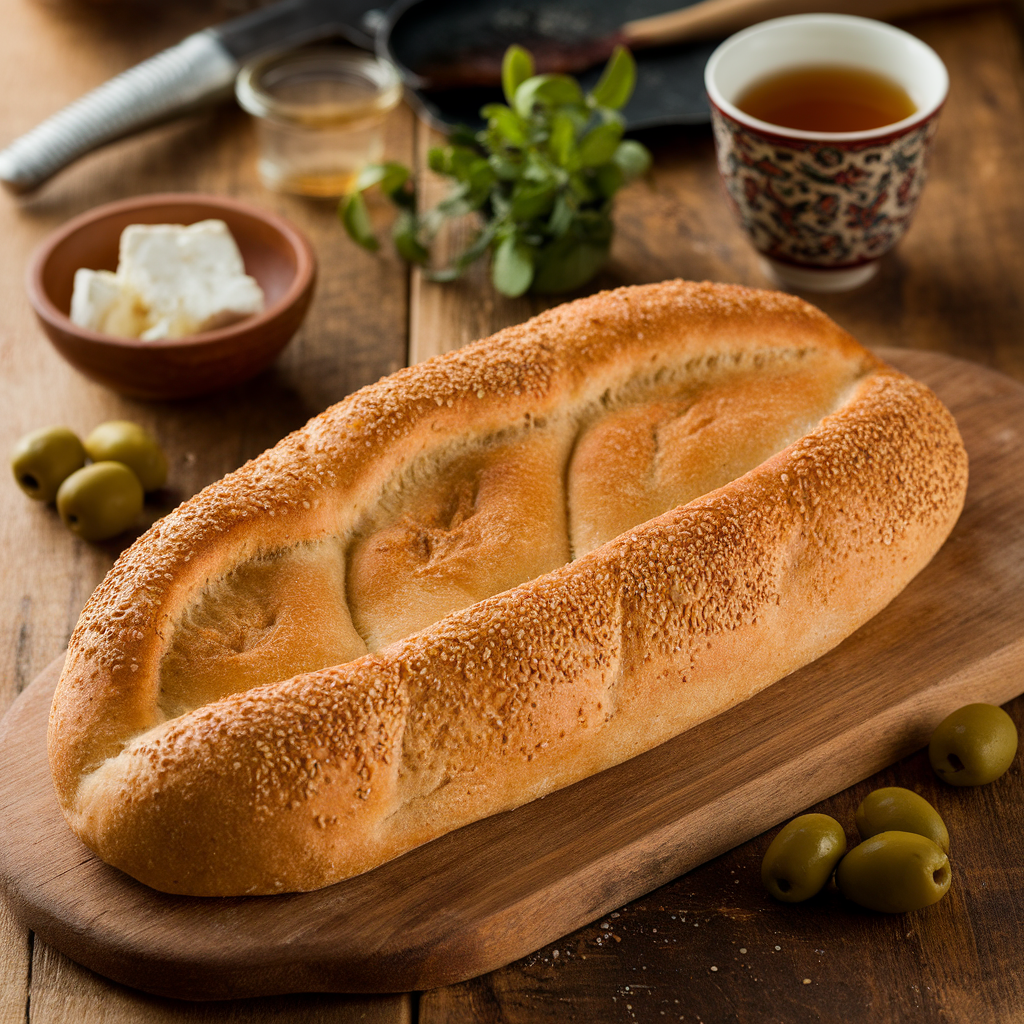
Ingredients for Persian Barbari Bread
Making Barbari bread at home involves simple pantry staples but requires attention to detail:
| Ingredient | Quantity | Notes |
|---|---|---|
| De farine tout usage | 4 cups (480 grams) | Sifted for best results |
| Levure sèche Active | 2 teaspoons | Instant yeast can also be used |
| De l'eau chaude | 1¾ cups (420 ml) | Around 110°F (43°C) |
| Sel | 1½ teaspoons | Sea salt or kosher salt preferred |
| Sucre | 1 tablespoon | Helps activate the yeast |
| Olive oil or vegetable oil | 2 tablespoons (optional) | Adds softness and flavor |
| Roomal glaze: | ||
| Le bicarbonate de soude | 1 tablespoon | Essential for crust glaze |
| De farine tout usage | 1 tablespoon | |
| De l'eau chaude | ½ cup (120 ml) | |
| Sesame seeds or nigella seeds | Optional | For sprinkling on top |
Equipment You’ll Need
- Large mixing bowl
- Measuring cups and spoons
- Dough scraper or wooden spoon
- Kitchen towel or plastic wrap
- Bread lame or sharp knife (for scoring)
- Baking sheet or pizza stone
- Pastry brush
- Cooling rack
Step-by-Step Persian Barbari Bread Recipe: A Crispy Bread Masterpiece
Étape 1: Activer la Levure
Dissolve sugar in warm water and sprinkle the yeast on top. Let it sit for 5-10 minutes until foamy and bubbly, indicating the yeast is alive and active.
Étape 2: Mélanger la Pâte
In a large bowl, combine the sifted flour and salt. Make a well in the center and pour in the yeast mixture along with oil (if using). Stir with a wooden spoon or your hand until a shaggy dough forms.
Étape 3: Pétrir la Pâte
Transfer dough to a lightly floured surface and knead for about 8-10 minutes. The dough should be elastic, smooth, and slightly tacky but not sticky. Add small amounts of flour if necessary.
Step 4: First Proof
Lightly oil the mixing bowl, place the dough inside, cover with a damp towel or plastic wrap, and leave it to rise in a warm place for 1 to 1.5 hours until doubled in size.
Step 5: Prepare the Roomal Glaze
In a small bowl, mix baking soda, flour, and warm water until smooth. This will be brushed over the dough later to achieve the signature Barbari crust.
Step 6: Shape the Dough
Once risen, punch down the dough gently. Divide it into two equal portions (or keep one large). Roll each portion into a long, oval shape about 1 inch thick on a parchment-lined baking sheet.
Step 7: Score the Dough
Using a bread lame or sharp knife dipped in flour, make 3-4 long furrows lengthwise across the dough. These ridges help control how the bread rises and give it the characteristic look.
Step 8: Apply the Roomal Glaze and Seeds
Brush the entire dough surface generously with the roomal glaze, covering every inch. Sprinkle sesame or nigella seeds on top, pressing lightly so they adhere.
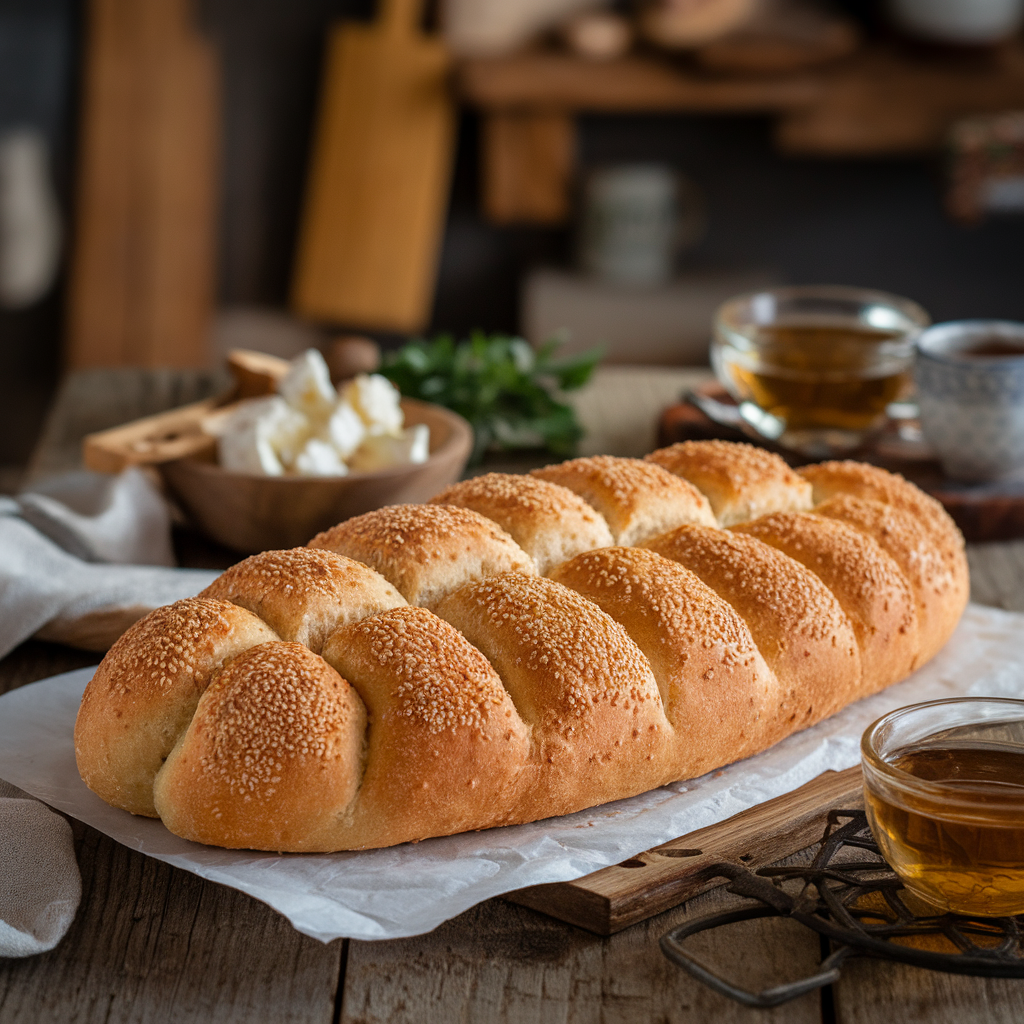
Step 9: Second Proof
Cover the shaped dough loosely and let rise for another 30 minutes until puffed.
Step 10: Preheat Oven
Preheat your oven to 475°F (245°C). Place a baking stone inside if available for an evenly baked bottom crust.
Step 11: Bake the Bread
Place the bread in the oven and bake for 15-20 minutes, or until the crust is deep golden and crisp. You should hear a hollow sound when tapping the bottom.
Step 12: Cool and Enjoy
Transfer the bread to a wire rack to cool slightly. Serve warm or at room temperature with your favorite Persian spreads or dishes.
Tips and Tricks to Perfect Your Barbari Bread
- Water temperature matters: Use water that’s warm to the touch but not hot (about 110°F/43°C) to activate yeast properly.
- Don’t skip the roomal glaze: This glaze is the hallmark of Barbari bread’s shiny, crunchy crust. Apply it just before baking for best effect.
- Use a baking stone: If you have one, a baking stone mimics a traditional clay oven and helps bake the bread evenly with a crispy bottom.
- Steam in the oven: Placing a tray of hot water on the oven’s bottom rack for the first 5 minutes of baking adds steam, improving crust texture.
- Practice scoring: The ridges aren’t just decorative—they control how the bread expands, so score deeply but carefully.
How Barbari Bread Compares to Other Flatbreads
Barbari bread shares qualities with various Middle Eastern and Mediterranean breads but is distinct in texture and preparation.
| Bread Type | Thickness | Crust | Texture | Origin |
|---|---|---|---|---|
| Barbari Bread | Thick (~1 inch) | Crispy, glossy | Soft crumb, crunchy crust | Iran (Persia) |
| Arabic Bread (Pita) | Thin | Soft | Pocketed, pliable | Middle East |
| Naan | Medium | Soft, slightly crisp | Fluffy, chewy | South Asia |
| Lavash | Very thin | Soft or crisp | Thin, flexible or crunchy | Armenia, Iran, Turkey |
| Focaccia | Thick | Slightly crisp | Chewy, airy | Italy |
Barbari bread’s combination of a thick, soft interior with a crunchy, caramelized crust makes it a favorite for those craving both texture and flavor in their pan bread recipes.
Serving and Pairing Suggestions for Persian Barbari Bread
Barbari bread’s versatility makes it perfect for many occasions. Here are some ways to enjoy your fresh, crispy Barbari:
- Traditional breakfast: Spread with creamy Iranian feta, fresh herbs like basil or mint, and a drizzle of olive oil or honey.
- With Persian stews: Use as a side to classic dishes like Ghormeh Sabzi (herb stew) or Fesenjan (walnut and pomegranate stew) to soak up sauces.
- Sandwich base: Slice horizontally and fill with grilled kebabs, tomatoes, onions, and sumac for a delicious Persian sandwich.
- Dips and spreads: Serve with hummus, baba ganoush, or mast-o-khiar (yogurt and cucumber dip).
- As a snack: Simply enjoy warm with butter and jam or cream cheese.
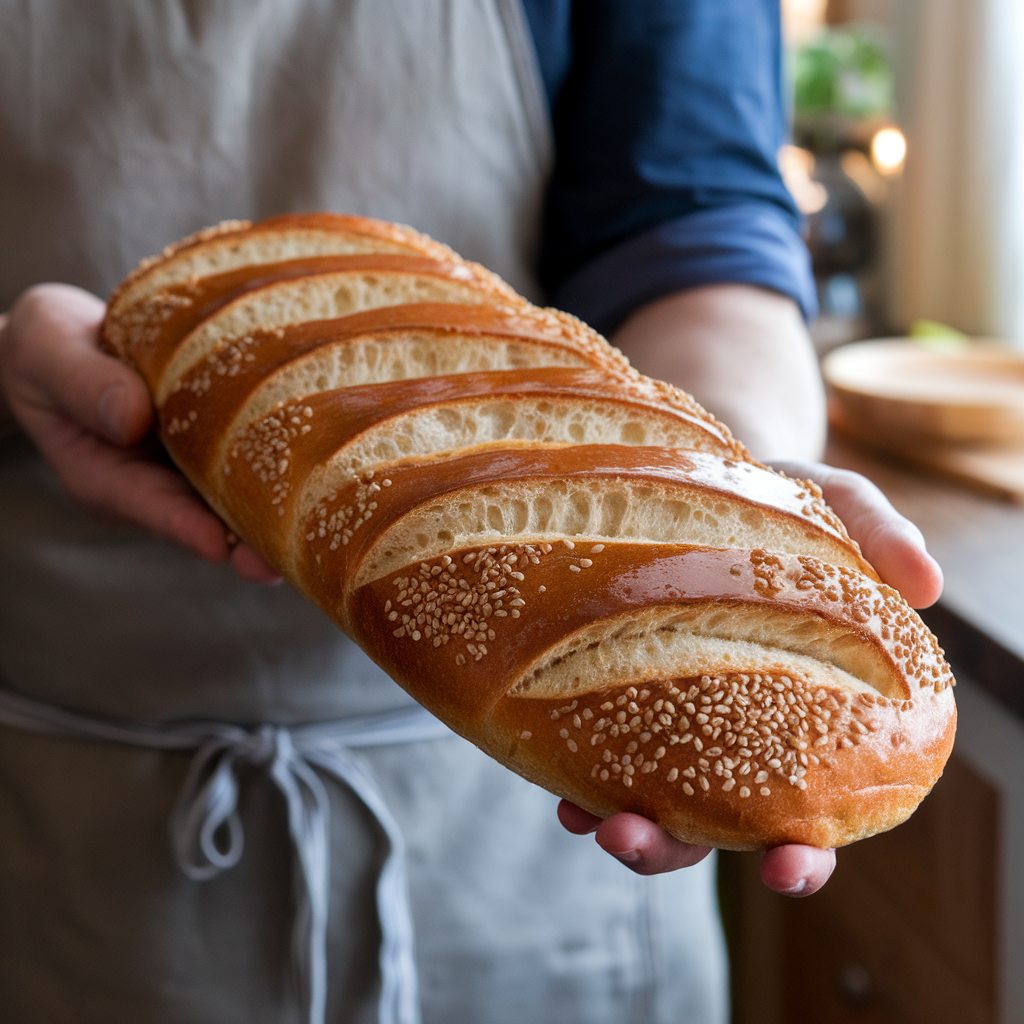
Variations on the Barbari Bread Recipe
Though traditional Barbari bread is simple and elegant, you can try several exciting variations to suit your taste:
- Herb-infused dough: Add finely chopped fresh rosemary, thyme, or dill to the dough for aromatic flavor.
- Garlic Barbari: Brush with garlic oil immediately after baking for a savory twist.
- Whole wheat Barbari: Replace half the all-purpose flour with whole wheat for a nuttier, healthier loaf.
- Seed toppings: Mix sesame with poppy or flax seeds to enhance the crunch and nutrition.
- Sweet Barbari: Add a touch of sugar or honey to the dough and serve with jams for a sweet treat.
Frequently Asked Questions About Barbari Bread
Q: Is Barbari bread similar to Arabic bread?
A: While both are Middle Eastern flatbreads, Barbari bread is thicker and crispier with a distinct caramelized crust, unlike the typically thinner and softer Arabic bread (pita).
Q: Can I make Barbari bread without a baking stone?
A: Yes, you can bake Barbari on a heavy baking sheet, but a baking stone helps produce a crisper bottom and more even heat.
Q: How long does Barbari bread stay fresh?
A: Barbari bread is best eaten fresh the day it’s baked. You can store leftovers in an airtight bag at room temperature for 1-2 days or freeze slices.
Q: What does the roomal glaze do?
A: The roomal glaze, made from baking soda, flour, and water, caramelizes in the oven, giving Barbari its shiny, crispy, golden crust—an essential feature of this crispy bread recipe.
The Cultural Significance of Barbari Bread
In Iranian households and bakeries, Barbari bread holds a revered place. It’s often associated with family gatherings, morning meals, and celebrations. Traditional Iranian bakeries still bake Barbari bread in large clay ovens called tannurs, and the smell of fresh Barbari bread wafts through neighborhoods, signaling the start of the day.
This bread is more than just food; it’s a connection to history, culture, and community. By making Barbari bread at home, you not only enjoy a delicious treat but also honor a centuries-old baking tradition.
Final Thoughts: Your Journey into Persian Bread Baking
With its crispy, crunchy crust and pillowy inside, Barbari bread is the perfect gateway to Iranian cuisine and artisanal bread baking. Cette Iranian bread recipe offers a hands-on experience to master classic baking techniques, from activating yeast and kneading dough to glazing and scoring for that signature look.
Whether you’re looking for an authentic Persian bread recipe or want to add a new pan bread recipe to your repertoire, Barbari bread delivers an unforgettable balance of flavor, texture, and tradition.
